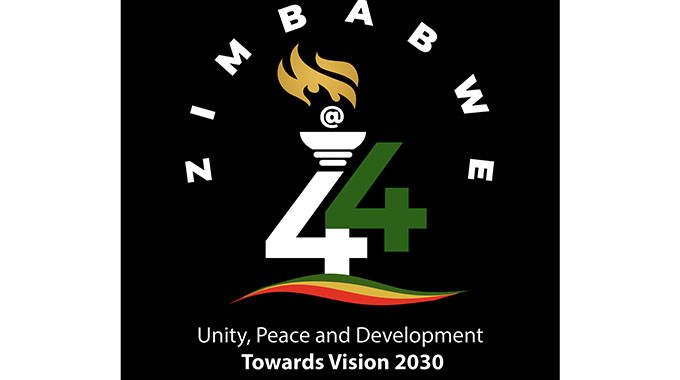Zim’s social sector on recovery path
Reza Hossain
Last Friday, the national statistics agency, ZIMSTAT, released preliminary results of the Multiple Indicator Cluster Survey (MICS) conducted between February and April this year. The MICS is an international household survey that was developed by UNICEF in 1990 to assist countries with data for monitoring human development in general and the situation of children and women in particular.
Since the last MICS was conducted in 2009, in the immediate aftermath of the socio-economic crisis that had crippled service delivery, it was widely acknowledged that a new survey was desperately needed to not only refresh the existing 2009 data, much of which had dipped because of the crisis, but also to gauge the impact of interventions undertaken in the last five years.
With funding from the European Union, UNDP, UNFPA, and the USAID’s Maternal and Child Health Integrated Programme, the survey was conducted among 17 000 households in every province in the country on social indicators covering nutrition, child and maternal mortality, health, child protection and development, education, reproductive health, and sexual behaviour.
Given the difficulties Zimbabwe has been through, that the country has managed a turnaround on most of these indicators within five years is simply phenomenonal.
It is to be recalled that after independence, Zimbabwe was a shining example in Africa of rapid progress in health, education, water and sanitation. Huge investments were made in building social services, expanding infrastructure, training medical professionals and teachers, and supporting the most vulnerable in society.
But the economic crises of the last two decades, coupled with the explosion of the AIDS pandemic, exacted a heavy toll on Zimbabwe’s social systems and its people.
As skilled manpower left and funding became less and less available, many of the earlier gains began to erode. The education system struggled to retain its teachers as examination pass rates and other indicators of quality dropped. In the absence of strong funding from the Government, a complex system of fees, levies and so-called incentives developed, further disadvantaging the poor.
When many African countries were recording a drop in maternal and child mortality, in Zimbabwe, these were rising. For example, between 1990 and 2010, maternal mortality tripled and under 5 mortality increased by more than 20 percent. Contrast this with neighbouring Zambia where, between 1992 and 2007, under-five mortality declined by 38 percent and maternal mortality declined by 18 percent.
The massive outbreak of cholera in 2008 that affected over 100 000 people and killed 4 000 and the measles outbreak of 2009 and early 2010 which affected over 10,544 with over 520 deaths, were testimony to the status of the social service system and a wake up call for everyone.
Urgent and important steps needed to be taken to reverse the tide. The Government, with the support of donors, launched several initiatives to address the underlying causes of cholera. These included the Emergency Rehabilitation and Risk Reduction programme, the Bulawayo Water and Sewerage Response programme, and Zim-Fund. These initiatives have contributed to the recovery of the water and sanitation sector and to reductions in cholera cases and other related deaths.
Transition funds were set up in health, education, and child protection which brought partners together to plan and coordinate national scale interventions at sectoral level under the leadership of the ministries of Health and Child Care, Primary and Secondary Education, and Public Service, Labour and Social Welfare. Managed by UNICEF, the transition funds have received generous contributions from the UK’s Department for International Development (DFID), and the governments of Canada, Germany, Ireland, Norway, and Sweden.
The Open Society Initiative for Southern Africa has also contributed to the Education Development Fund.
Along the way, some key milestones have been achieved. About 23 million textbooks have been distributed to schools, millions have been spent on procuring and distributing essential, life-saving vaccines and medicines and training and retention of midwives and doctors, and the cash transfer programme is reaching 55 000 poor and labour-constrained households, improving the lives of 154 000 children.
A large scale water and sanitation programme supported by DFID and the Swiss government is increasing access to safe water and sanitation for people in 33 rural districts.
The Australian government is supporting the rehabilitation of water and sanitation facilities in 14 small towns. These initiatives are providing a much-needed lifeline to thousands of households and communities across Zimbabwe and helping to reduce the incidence of diarrhoeal diseases, especially among children.
The author is UNICEF Representative in Zimbabwe. See full story on our website.
And this bring us to the MICS survey. The findings show that things are improving. The curve is bending, and it is bending towards progress. Here are the facts – when we compare the situation in 2009, when the social services were in a state of near collapse, with 2014, the rate of change in some indicators is encouraging:
· In 2009, only 37 percent of children were fully immunized. Fast-forward to 2014, 69 percent of children are now fully immunized. There has been no major outbreak of vaccine preventable dieases since then;
· In 2009, only 26 percent of babies were exclusively breastfed; in 2014, that figure has risen to 41 percent;
· In 2009, 57 percent of pregnant women were visiting antenatal clinics at least four times during the pregnancy; in 2014, the figure is now 70 percent. Similarly, postnatal care for mothers has increased from 27 percent in 2010 to 78 percent in 2014.
The above and a number of other health system strengthening measures have resulted in improvements in maternal and child health. Under-five mortality has declined from 94 deaths per 1,000 live births in 2009 to 75 deaths per 1,000 live births in 2014. Similarly, the maternal mortality ratio for the period 2007-2014 stands at 614 deaths per 100,000 live births. This is a remarkable drop when you compare it with the 2010/11 ZDHS, which put the figure at 960 deaths per 100,000 live births for the seven year period preceding the survey.
Behind these statistics are the faces of thousands of Zimbabwean women and children whose lives have been saved; who have been given the chance to survive, thrive and contribute to this nation’s well-being and progress. Behind these numbers lies families that would have been broken and children who would have been orphaned.
A similar story of progress is evident across other sectors. For example, there are more children attending secondary school – from 44.8 percent in 2009 to 57.5 percent in 2014.
What these figures say is that if the costs of failure have been great, so too have been the rewards of hard work. The government, development partners, UN agencies, the civil society, and others have worked hard in the last five years to get the systems up and running again – to build up human resources and to restore service delivery.
These figures tell another story too – the resilence of the social sector system and the hard work of the people who work in it. Indeed, had it not been for the commitment and efforts of the thousands of health personnel, teachers, social workers, and NGO workers from every corner of the country, none of these achievements would have been possible.
We have seen strong partnerships through various funding mechanisms that include the transition funds in health, education, child protection, and water and sanitation which UNICEF manages, the World Bank’s Results-Based Financing framework, PEPFAR, the Global Fund, and many others.
As we delight in these achivements, we should remind ourselves that we have won a number of battles but we have not yet won the war. We can take positives from the data, but we still have an unfinished agenda; social services still face numerous challenges.
The survey points out areas where progress is still lagging. True, maternal mortality has been reduced by 36 percent but it still remains too high. A great majority of these deaths are happening in communities which do not have access to or do not want to deliver their babies in health facilities. Greater efforts are needed to reach these communities.
Other areas where progress is lagging include birth registration, nutrition, and open defecation.
As we move forward, we should sharpen our focus on improving quality, reaching the unreached and difficult-to-reach communities and strengthening monitoring and supervision
We believe though that the greatest challenge facing Zimbabwe now is to build on and sustain these gains. This should be our collective concern. These gains can not be sustained and further gains can not be made if, in budget planning, allocation and disbursement, we lose sight of those strategic choices that have delivered positive results; if we do not give priority to those low cost but high impact policies and programmes that have made a difference in the last five years.
It is important to keep reminding ourselves that these allocations are not expenditures but investments. The economic progress of any nation, as we have seen in other countries, starts with investing in health and education as the drivers of sustainable economic growth. Economic growth depends on a healthy and educated population.






Comments